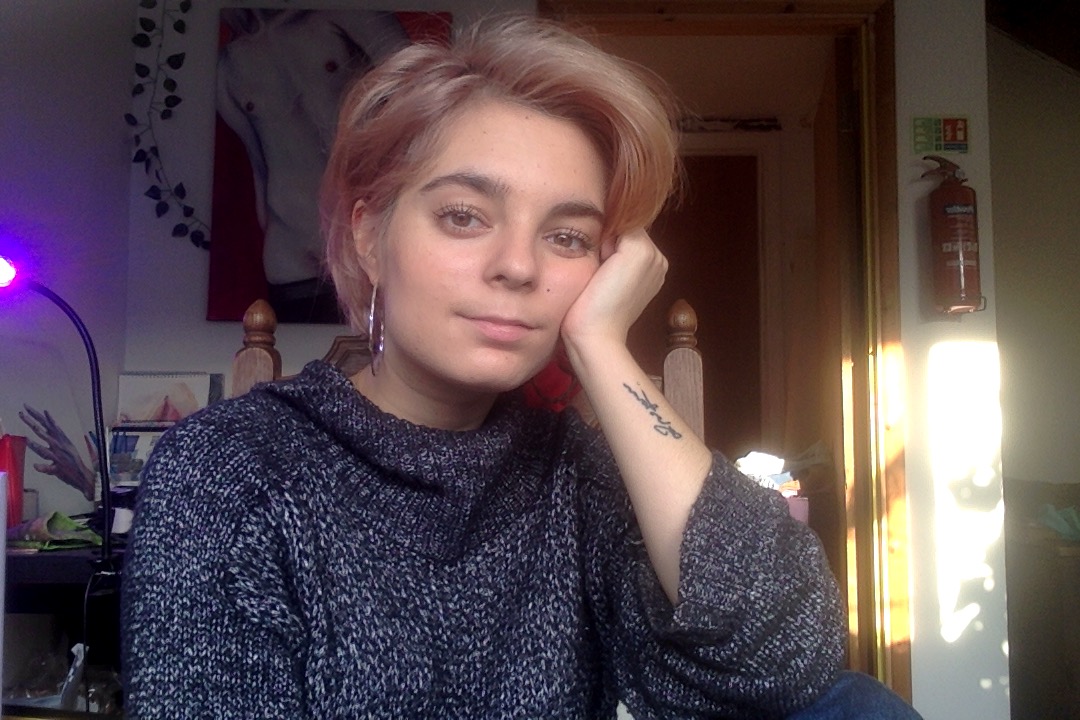Shit. Did I do the right thing? I start panicking to myself. Thoughts were bouncing around my head, jumping from concepts such as attractiveness, identity and upkeep.
Will people jump to conclusions about my identity because I now have a pixie cut?
Will I still be considered “attractive”?
Will I still be “me?”
But once I got home, I looked in the mirror and for the first time in my entire life, I felt like me. My previously collarbone-length chocolate brown hair was now a lavender pixie cut, shaved at the back. I couldn’t stop smiling.

Which begs the question: why are women made to feel that their hair is such an integral part of their femininity, and what defines them as a female – and ultimately can define how attractive they are? And more importantly, why do women who cut their hair end up deemed as more “masculine”, or even sometimes are considered to be gay?
The relationship between women, hair and image is one that resides in not only media and pop culture, but it’s also embedded in religion. From Islam to Judaism to Christianity (in the case of nuns) considering it a form of modesty for women, giving the hair on a female’s head an undisputable amount of power – and showing this by asking women to cover it up. The relationship between women and their hair being a symbol of power and sexuality has made its way into society’s rigid ideas of gender norms, lodging itself into the concept of being intertwined with female sexuality and identity. Women have been depicted with long hair for centuries – the Virgin Mary (who note, is almost always shown with a scarf around her head, with only a sliver of hair to be seen), Greek Goddesses such as Athena and Aphrodite… the only example that comes to mind who challenges that image is Cleopatra, who has been illustrated with short black hair for the majority of history – but her hair is constantly adorned with crowns, headpieces and beads. The tie hair has to sexuality and power when it’s the on the head of a woman is not a new concept; in fact it’s centuries old.
I recently watched a short documentary on YouTube by Dazed, titled “OMG She’s Bald: the power of a woman with a shaved head”. Dazed is a UK-based publication that discusses fashion, identity and culture. It interviewed and focused on women of different backgrounds and ethnicities who had shaved their heads to learn how they were viewed differently, as well as explore how the concepts and ideas of sexuality and femininity changed for them once they had shaved their heads.
Culture came into the conversation a lot, particularly with a young woman who was Indian and English named Ash. “It took me two years before I actually shaved it… I’m spiritual and I do believe in Hinduism – and that hasn’t changed since I’ve shaved my head. But people question it because I’ve shaved my head… Because it’s not normal for an Indian girl to shave her head. I want another Indian girl to shave her head – I’m waiting on it, because I’m yet to see another girl from Indian heritage shave their head. ‘Cause it’s a lot of courage, like, you’re literally going against your whole culture… You’re going against everything they believe in and you’re questioning everything they’re built on.”
Ash also discusses how often when a woman shaves their head it comes with the assumption that they are going through an unstable time, when in fact for her, it’s her “most stable haircut”. The relationship between culture and female hair is a complex one, and one that seems to teeter between the lines of “rebelling/defying your culture”, and “respecting your culture but also respecting your own desires to be honest about your identity”.
Yet it’s not only women who’ve been changing and the challenging the relationship between hair and identity, and gender. Over the past 7 years or so, there’s been a huge increase in the number of men growing their hair long, to what would be considered “feminine” lengths. With trends such as the “man-bun” (which, take note, society felt the need to give the bun on male’s head a different term, rather than just referring to it as a “bun” – as we do with women) becoming ever more popular and apparent in society. I’ve spoken to a handful of men who agree that they feel “more comfortable having long hair now”, despite some of them having long hair their whole lives but feeling pressure from society and their male peers to cut it due to them being considered potentially gay or feminine in any shape or form. How ludicrous is it that the concept of sexual orientation is so often associated with the way a male or female choose to have their hair? The longer the hair on the head of a male, the less masculine he is considered to be, and the shorter the hair on the head of a female, the less feminine she is viewed to be. But in the past few years, there’s been a trend where women have been cutting their hair shorter and shorter, while men have been growing their hair longer and longer.
Of course, I can only speak on the behalf of a woman who has cut most of her hair off. It is one of the most liberating things I have ever done for myself. But, I can also imagine that for my male counterparts, the sense of freedom and emancipation is just as equal for them when they grow their hair after years and years of society telling them to do quite the opposite. Hair is a powerful thing, it can change a person’s life and the way they view themselves instantaneously. It can help you to shed parts of yourself that maybe you associated with a darker time in your life. It’s no wonder that it’s a common known fact that a lot of people who go through heartbreaking events in their lives such as the death of a loved one or a break up go for a haircut or hair change right after. Hair is such a wonderful way of expressing identity; hence why it’s so important to eradicate the stigmas around the way men and women choose to have their hair. And we’re slowly getting there.

